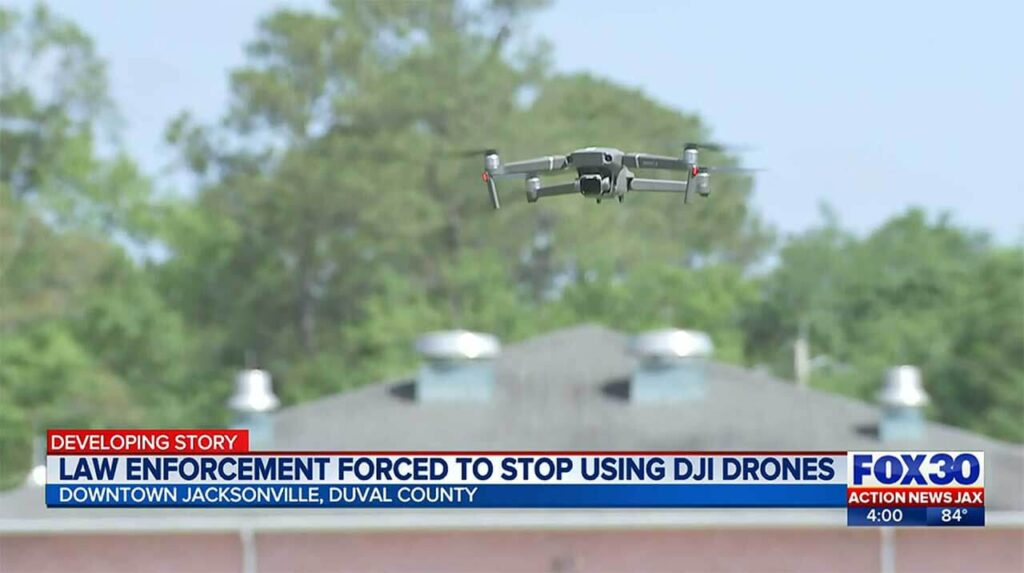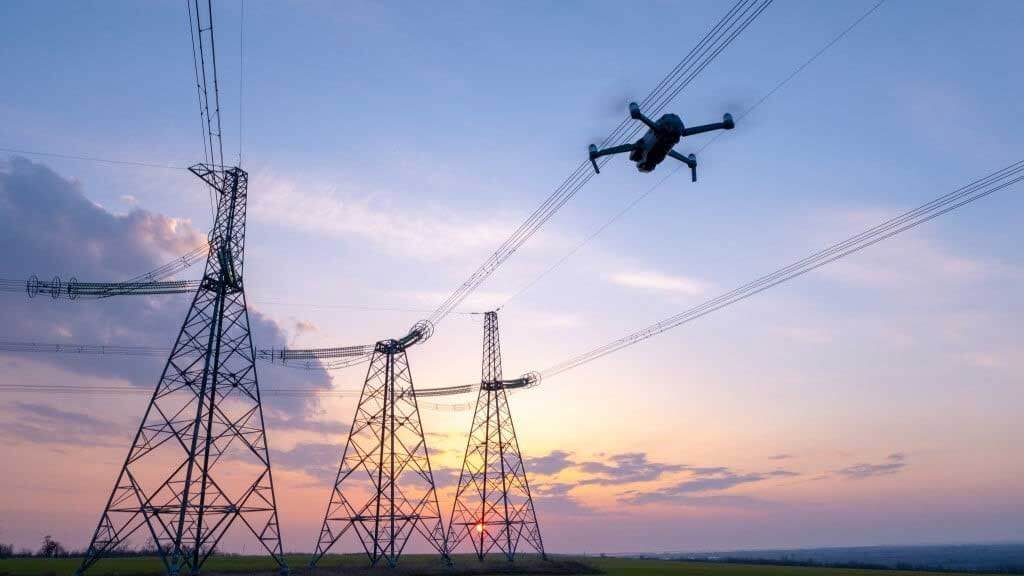By: Jason Day, AG Public Safety Ambassador
In recent years, drone manufacturer bans have sparked heated debates across industries, with public safety agencies at the center of the conversation. While policymakers cite security concerns and national interests as reasons for restricting certain manufacturers, they often overlook the real impact on emergency response, disaster relief, and law enforcement operations. Public safety professionals, who rely on drones for critical missions, offer a perspective that extends beyond policy discussions.
Public safety agencies across the U.S. strongly support the development of American-made drones and recognize the importance of securing reliable, domestically produced technology. However, until policymakers take viable steps to bridge the gaps in current technology, first responders remain committed to selecting the best tool for the best price to ensure that they have access to the most effective equipment to protect lives and serve their communities. Prioritizing operational readiness and mission success must remain the focus while encouraging innovation in the domestic drone industry.
The Operational Reality of Drone Bans
For many public safety organizations, drones have become indispensable tools in search and rescue missions, firefighting operations, law enforcement and disaster response. Unmanned aircraft provide views that enhance situational awareness, allowing responders to make informed decisions in real time. However, broad bans, or attempted bans, on certain manufacturers or tech from specific countries-of-origin have disrupted operational readiness. They have forced agencies to pause purchasing, research alternative platforms or abandon their drone programs altogether.
One of the most significant challenges comes from the sudden loss of trusted technology. Many banned drones are widely regarded for their reliability, advanced imaging capabilities, and affordability—qualities that make them ideal for public safety operations. Replacing these systems requires extensive retraining, increased budgets, and months of procurement, which leaves their communities vulnerable during the transition.

The Voices Leading the Charge
Over the past 7 years there have been many conversations across the county about this issue. Leaders have emerged on both sides of the aisle. Sgt. Robert Robertson of the Arlington Police Department has been a strong advocate for public safety agencies having the freedom to choose the best drone technology for their operational needs.
Robertson has consistently voiced support for policies that empower agencies to make informed purchasing decisions, rather than restrictive mandates that limit access to proven technology. During the Texas legislative session, Sgt. Robertson provided noteworthy insights into how proposed legislation would affect law enforcement in Texas.
In one of his many YouTube videos, he talks about what could happen if drone bans are put in place:
Link: Texas is trying to ban police drones!
“Criminal, cartels and foreign adversaries will have better drone tech than our officers. That’s not a theory, it is happening in other states. Departments will be forced to buy drones that cost 3 to 12 times more and they will deliver less capability and come with supply chain nightmares, limited batteries, back orders and performance issues. Smaller departments, they may lose their drone programs entirely.”
Sgt Robertson’s leadership in Texas, along with other public and private sector colleagues, have shaped the discussions and affected positive changes to ensure that public safety professionals can continue leveraging drone technology for critical missions.
A Call for Practical Policy Solutions
Public safety professionals stress the need for balanced policies that address security concerns without compromising emergency response capabilities. Many advocate for collaboration between lawmakers, industry leaders, and end-users to develop realistic transition plans, provide funding support for equipment changes, and ensure a phased approach rather than abrupt mandates.
To be clear, national security concerns surrounding certain foreign-made drones are valid and warrant careful examination. Data integrity, cybersecurity risks, and potential vulnerabilities must be addressed to ensure sensitive information is protected. However, public safety agencies argue that an outright ban without viable alternatives can do more harm than good.
Instead of blanket prohibitions, professionals in the field advocate for robust security protocols, secure data transmission solutions, and industry-specific regulations that mitigate risks while preserving access to essential drone technology. Public safety agencies don’t oppose necessary security measures, they simply need policies that recognize the real-world implications of drone bans.
The FAA Reauthorization Act of 2024 mandated a closer examination of security concerns related to drone operations, particularly regarding cybersecurity risks. While the legislation set the stage to address potential threats, many of the required assessments and implementations have yet to be completed. Without a comprehensive security assessment, public safety professionals are forced to navigate evolving restrictions without clear alternatives and lawmakers are left without information to make data driven decisions.
Lessons from Florida’s Drone Ban: The Need for Smarter Solutions
Florida’s ban on certain drone manufacturers sent shockwaves through public safety agencies, forcing departments to rethink their UAS programs overnight. While the intent behind the policy was to address cybersecurity concerns, the practical consequences revealed critical gaps in implementation which offer valuable lessons for future laws or regulations.
One of the biggest takeaways: the importance of phased transitions rather than abrupt mandates. Many Florida agencies had invested heavily in their drone programs. When the ban took effect, departments were left scrambling for alternatives, often without sufficient funding or time to train personnel on new systems. A more gradual approach, allowing agencies to phase out restricted drones while securing viable replacements, would have mitigated operational disruptions.
In 2023, Chris Todd, Executive Director of AIRT was interviewed by DroneXL and said the “ban was causing headaches for public safety” and “there is a lot of frustration; folks have spent a lot of time and work building out these programs and now they are having to restart from square one.”
Link: Florida’s Chinese Drone Ban Creates Challenges For Local Fire And Police Departments

The Financial and Logistical Burden
Drone bans don’t just affect operational efficiency, they also place a significant financial strain on public safety agencies. Many departments operate on limited budgets and often rely on grant funding and resource sharing to maintain their drone programs. Being forced to replace fleets of drones with approved alternatives is often cost-prohibitive, leading to program cuts or severe limitations in usage.
The availability of compliant replacements remains an issue. While domestic drone manufacturers are developing new models to fill the void, some public safety leaders argue that the technology isn’t yet on par with banned systems in terms of affordability, performance, or reliability.
Additionally, people underestimate the size and scope of some public safety drone programs in the U.S. While many assume agencies operate only a handful of drones, the reality is that many departments manage fleets of hundreds of unmanned aircraft, with budgets in the millions of dollars. These operations must consider economies of scale and how to maintain these large fleets without excessive financial strain.
The Missing Ecosystem for U.S. Manufacturers
One of the biggest challenges facing American drone manufacturers is the lack of a robust ecosystem to support public safety operations. Unlike their foreign counterparts, U.S. drone makers struggle with gaps in critical areas like payload deployment mechanisms, third-party accessories, and modular integration options. These elements directly affect an agency’s ability to customize drones for mission-specific needs.
Beyond accessories, fleet diversity is essential for public safety operations. There is no single perfect drone that fits every mission, and agencies need access to different models optimized for a variety of missions. Restrictive procurement policies risk forcing agencies into a “one-size-fits-all” approach, which compromises efficiency and effectiveness in the field.
For U.S. manufacturers to successfully compete and meet public safety needs, investing in a scalable drone ecosystem is crucial. Public safety agencies need choice, flexibility, and mission-ready solutions, not limitations that hinder their ability to serve and protect.

The Power of a Unified Third-Party Ecosystem in Public Safety UAS Operations
Public safety agencies also rely on drones from multiple manufacturers to handle their diverse operational needs. However, integrating these platforms into a cohesive operational framework remains a challenge. When all drones, regardless of brand, work within the same fleet management software, operational interface, and video streaming system, agencies experience a dramatic increase in efficiency, interoperability, and mission success.
A standardized ecosystem allows responders to manage their fleets with consistent workflows. This ensures smooth collaboration across departments and jurisdictions. It eliminates the need for multiple training programs tailored to proprietary systems and reduces the learning curve. Unified real-time video streaming enhances situational awareness by allowing command centers to seamlessly access footage from any drone in the fleet without compatibility roadblocks.
Despite these operational advantages, many U.S. drone manufacturers have been reluctant to relinquish control over their proprietary software and integrations. Instead of fostering a more open environment, some manufacturers restrict their drones to closed-loop ecosystems, limiting agencies’ ability to mix and match platforms. While this approach may protect brand identity, it hinders fleet diversity, forces costly platform lock-ins, and slows down adoption of mission-ready solutions.
A Smarter Approach to Smarter Drone Policies
The conversation around drone manufacturer bans is far from simple. Public safety agencies recognize the need for security and national interests, but they also understand that operational effectiveness must remain a priority. The challenges presented by lack of choice demonstrate the need for a more balanced, strategic approach to regulations.
The key to crafting smarter policies lies in collaboration. By fostering open discussions, sharing real-world perspectives, and presenting data-driven recommendations, agencies can help educate policymakers on the true impact of restrictive regulations. A sustainable path forward involves investing in domestic innovation, encouraging interoperability among manufacturers, and ensuring that agencies have the flexibility to choose the right tools for their missions.
By: Jason Day

